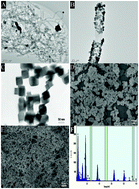Amperometric detection of hydrogen peroxide utilizing synergistic action of cobalt hexacyanoferrate and carbon nanotubes chemically modified with platinum nanoparticles
Abstract
In this study, a novel composite of

* Corresponding authors
a
College of Chemistry and Chemical Engineering, Lanzhou University, Lanzhou, PR China
E-mail:
zhaojihua@lzu.edu.cn
Fax: +869318912582
Tel: +86931891254 1
b College of Chemistry and Chemical Engineering, East China University of Science and Technology, Shanghai, PR China
c Laboratoire de Chimie de Coordination, CNRS UPR-8241 and Université de Toulouse, UPS INPT 31077 Toulouse Cedex 4, France
In this study, a novel composite of

 Please wait while we load your content...
Something went wrong. Try again?
Please wait while we load your content...
Something went wrong. Try again?
L. Han, Q. Wang, S. Tricard, J. Liu, J. Fang, J. Zhao and W. Shen, RSC Adv., 2013, 3, 281 DOI: 10.1039/C2RA21998K
To request permission to reproduce material from this article, please go to the Copyright Clearance Center request page.
If you are an author contributing to an RSC publication, you do not need to request permission provided correct acknowledgement is given.
If you are the author of this article, you do not need to request permission to reproduce figures and diagrams provided correct acknowledgement is given. If you want to reproduce the whole article in a third-party publication (excluding your thesis/dissertation for which permission is not required) please go to the Copyright Clearance Center request page.
Read more about how to correctly acknowledge RSC content.
 Fetching data from CrossRef.
Fetching data from CrossRef.
This may take some time to load.
Loading related content
